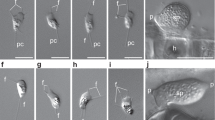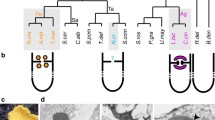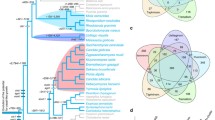Abstract.
Annexin homologues have been found in animals, plants, and distinct protist lineages. We report the identification of the first fungal annexin, encoded by the anx14 gene of the filamentous ascomycete Neurospora crassa. Annexins have a complex evolutionary history and exhibit a large number of gene duplications and gene losses in various taxa, including the complete loss of annexin sequences from another ascomycete, the budding yeast Saccharomyces cerevisiae. Surprisingly, the N. crassa annexin homologue is most closely related to the annexin homologue of the slime mold Dictyostelium discoideum, suggesting a phylogenetic link between cellular slime molds and true fungi. Both of these annexin homologues are closely related to the family of annexin homologues present in animals, an observation consistent with the existence of the animal–fungal clade. These data further suggest that the gene duplications that generated the family of annexin sequences present in animals, fungi, and slime molds began prior to the divergence of these taxa.
Similar content being viewed by others
Author information
Authors and Affiliations
Additional information
Received: 10 December 1997 / Accepted: 17 April 1998
Rights and permissions
About this article
Cite this article
Braun, E., Kang, S., Nelson, M. et al. Identification of the First Fungal Annexin: Analysis of Annexin Gene Duplications and Implications for Eukaryotic Evolution. J Mol Evol 47, 531–543 (1998). https://doi.org/10.1007/PL00006409
Issue Date:
DOI: https://doi.org/10.1007/PL00006409




